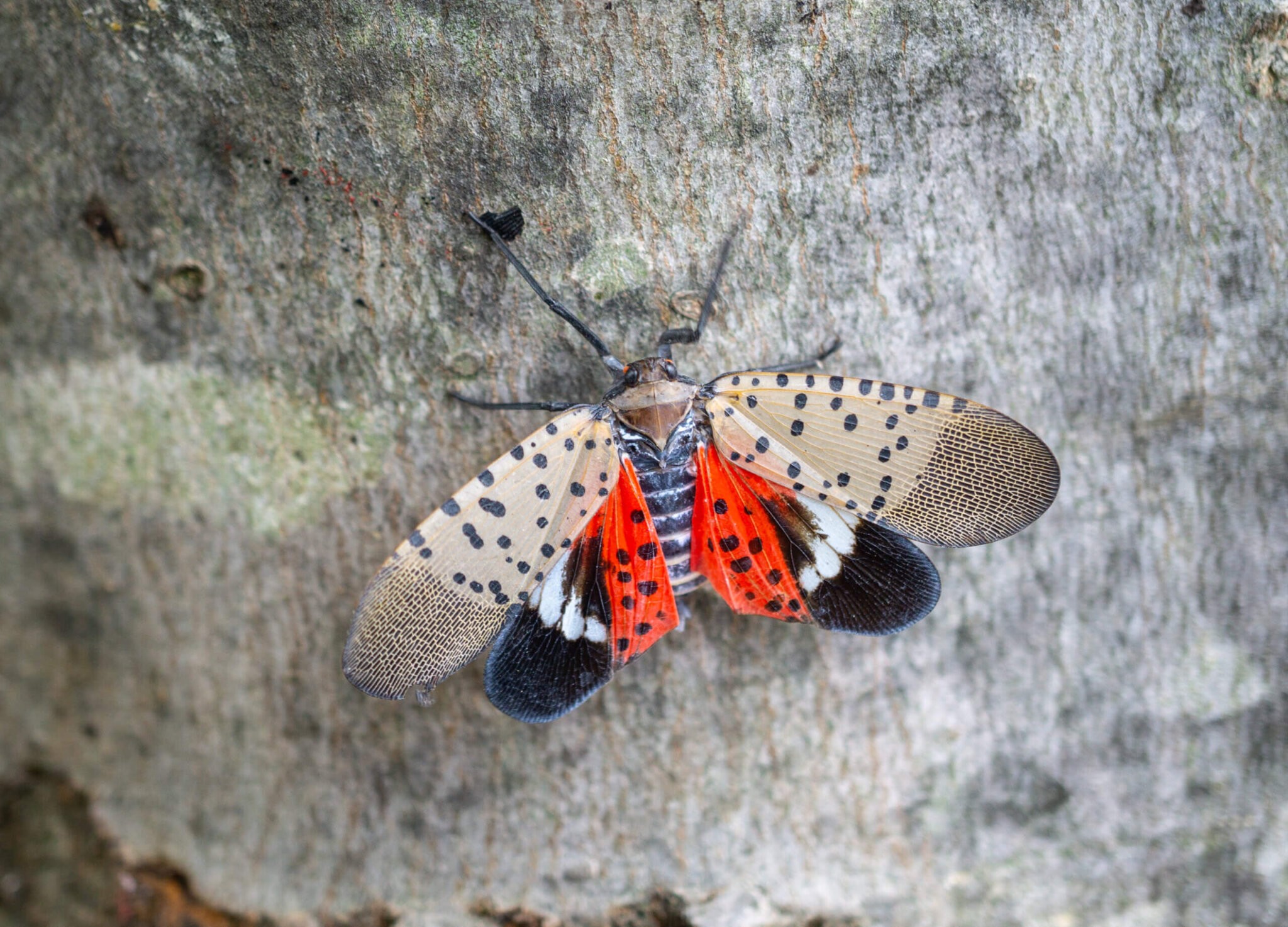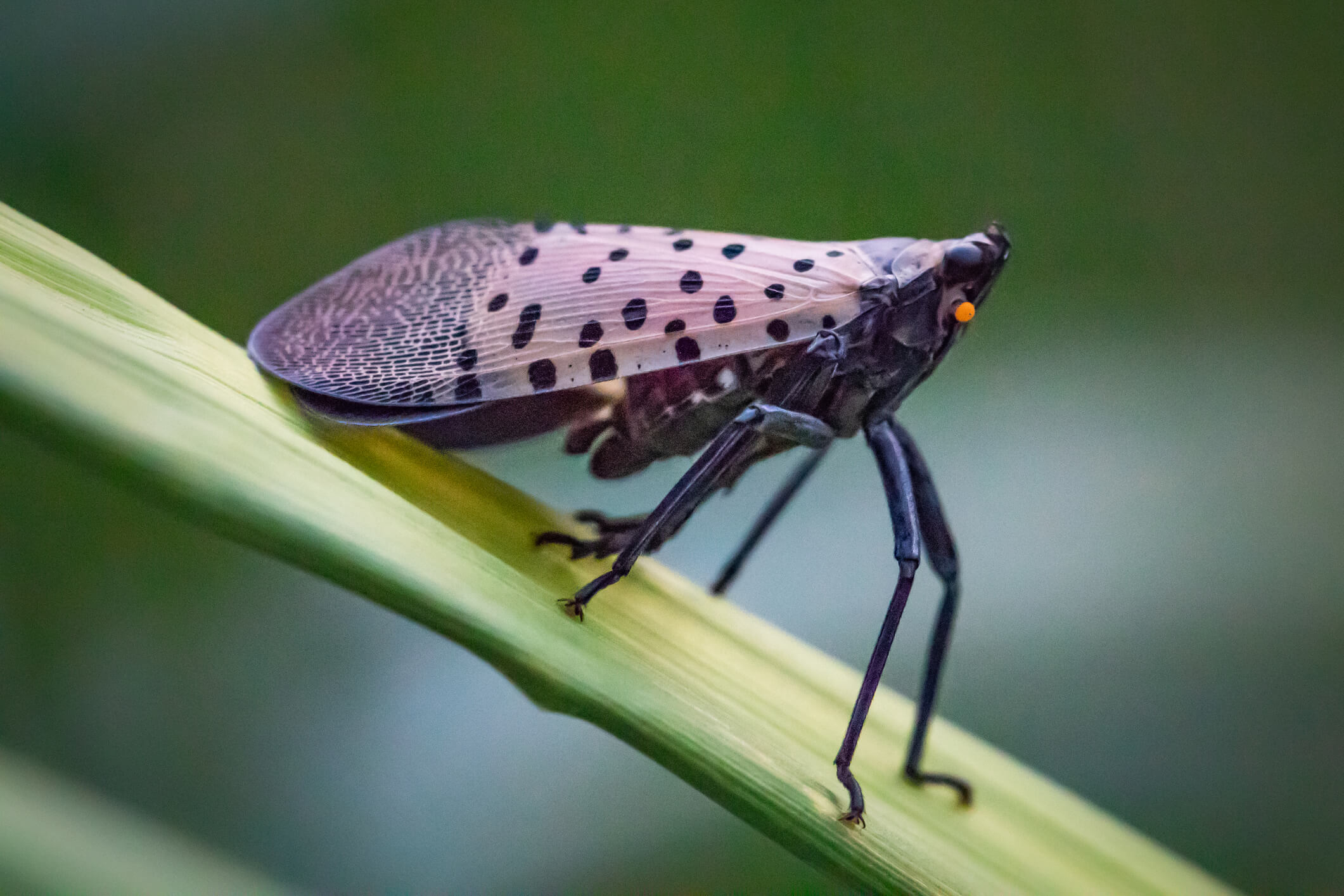Incoming Invasion: East End, Wineries on Alert Amid Spotted Lanternfly Sightings

Spotted lanternfly sightings increasingly reported in western Suffolk County have the East End bracing for the inevitable arrival of the invasive pest that feeds on grapes — sour news for the region’s wineries.
Winemakers, government leaders and agricultural experts say that although the insects don’t hurt people, animals or structures, the eastbound invasion is a serious concern to Long Island Wine Country, which is celebrating its 50th anniversary this year. But experts’ understanding of the invasive species — and how to fight them — is continuing to evolve beyond widespread publicity campaigns urging the public to squish the bugs on sight, which has only slowed the insects’ arrival.
“Our biggest concern right now is what it can potentially do to our grape production,” Christopher Logue, who is the director of the Division of Plant Industry at the New York State Department of Agriculture and Markets, told reporters during a news conference on August 16. “Our vineyards, especially on Long Island and in the Hudson Valley, need to be looking very carefully and should be starting to monitor for spotted lanternfly.”
A native of Asia, the spotted lanternfly was first identified in the United States in 2014, northwest of Philadelphia. It’s likely that insect eggs came over with a load of landscaping stones. Nine years later, there are reported infestations across the Midwest and the East Coast, with the first sightings in New York State confirmed on Staten Island in 2020, Logue said.
The spotted lanternfly — striking for its red wings with black spots — is known to suck the sap out of 70 different species of plants and excrete honeydew where it lands. One of its favorites are grapevines, which is problematic for New York State, which is the third-largest grape producer in the United States and boasts a $300 million wine industry statewide, with dozens of wineries on the East End. Apples, hops and maple trees can also be negatively affected.

The state agriculture department has also been sending out survey teams to destroy the insects and any egg masses that are found. One of the best tools has turned out to be battery-operated, backpack-held vacuums that crews use to suck the spotted lanternflies up.
“It can have an economic impact through its feeding on grapevines,” Logue added, noting that it “can cause an off-flavor in grapes.”
Sucking the sap out of grapevines can also cause the crops to not survive the winter, officials said.
“Unfortunately — believe it or not — there is not a lot that can be done about it or to prepare for it,” said Kareem Massoud, an award-winning winemaker at Paumanok and Palmer vineyards, and president of Long Island Wine Country. “I describe it as a slow motion train wreck. You can see it coming, but there is not a lot you can do to avert the consequences.”
Massoud said he’s been made aware of individual insects found on the East End, but no infestations.
“It seems we will make it through the 2023 season without an issue, but we are bracing ourselves for the first real problems to present in 2024,” he cautioned.
Scientists at Penn State and Cornell University have been trying to find a solution for the past decade and Logue says an interstate plan is expected to be released in the near future.
“It’s one thing to know what’s coming, but, as you know, (it) can be something else to actually experience it,” said Dan Gilrein an entomologist with the Cornell Cooperative Extension of Suffolk County. “Unfortunately it’s not going away — the adults will die with the first hard frost but the eggs overwinter — and can’t be eradicated, but there are things that can be done to manage it and work is underway to find a biological control that can be released.”
One bit of good news, Gilrein said that the insect has become rather scarce in the area of Pennsylvania where it was once common.
“We’re not sure why, but one possible factor is the local fauna — birds, spiders, etc. — have adapted to this new food source,” Gilrein said. “Some populations in PA were also decimated by two natural insect-killing fungi that are being studied now at Cornell.”
That’s in addition to the ongoing campaigns urging the public to report anytime they find a spotted lanternfly, then squish it.
“Along with reporting the sighting, we encourage people to kill any spotted lanternflies that they see,” said Southampton Town Emergency Manager Ryan Murphy. Sightings can be reported at agriculture.ny.gov/spottedlanternfly or email photos and the location to spottedlanternfly@agriculture.ny.gov.
The spotted lanternfly is a good hitchhiker, officials added.
“People are also urged to not become inadvertent transporters of spotted lanternflies,” Murphy said, noting that spotted lanternflies and their eggs can be found on vehicles, in containers and on all sorts of surfaces. By moving these items from one area to another without removing the insects or their eggs, people can inadvertently cause additional spread of the pest.
“Besides killing ones they find, we are asking the public to avoid transporting them to new areas, to learn more about this insect that’s likely to be coming and stay around us for some time, and of course not to panic,” Gilrein said.
Southampton Town Supervisor Jay Schneiderman said: “It is up to all of us to be aware and take action to help stop the spread of the spotted lanternfly.”
-With Associated Press



